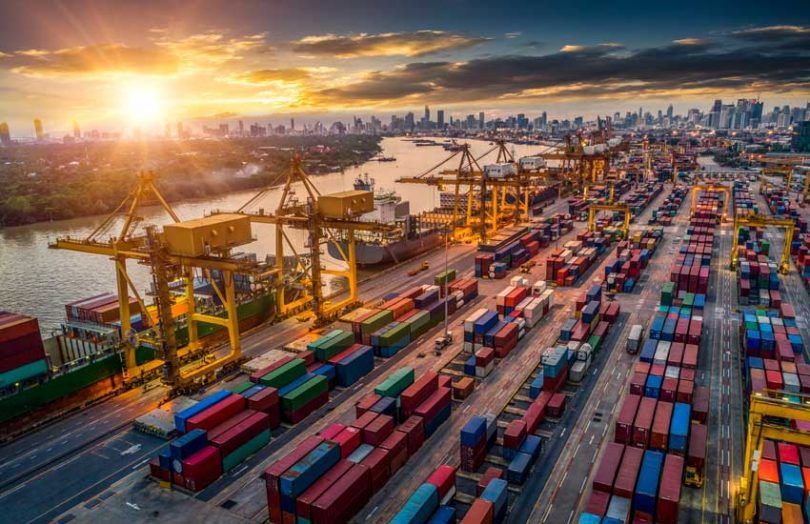- By TOP CHINA FREIGHT
- August 26, 2025
- Shipping
Shipping company from China to Philippines is essential for businesses as the Philippines has become one of China’s fastest-growing trading partners, with trade volume surpassing $30 billion annually. Whether you’re importing electronics, construction materials, textiles, or small e-commerce parcels, choosing the right provider can make or break your logistics strategy.

1.Why Choosing the Right Shipping Company Matters
Bulk discounts and optimized routes help you save on every shipment.
Professionals guide you through documentation, customs, and tariffs.
Streamlined operations reduce lead times.
Insurance and secure handling minimize financial exposure.
From pick-up in China to last-mile delivery in the Philippines.
Example:
A furniture retailer in Manila reduced their shipping costs by 15% and delivery times by 3 days after switching to a full-service freight forwarder that offered cargo consolidation and customs brokerage in-house.
2.Main Shipping Methods
Choosing the best method depends on your cargo type, urgency, and budget.
| Mode | Transit Time | Estimated Cost | Ideal For | Advantages | Drawbacks |
|---|---|---|---|---|---|
| Sea Freight (FCL/LCL) | 5–12 days | $500–$1,200 per 20ft container | Bulk goods, heavy machinery, raw materials | Cost-efficient, handles large volumes | Slower, risk of port congestion |
| Air Freight | 2–5 days | $5–$8/kg | High-value electronics, urgent shipments | Fast, reliable | High cost for heavy cargo |
| Express Courier | 2–4 days | $10–$15/kg | Samples, e-commerce orders, documents | Door-to-door service | Limited size and weight |
| Multimodal (Air + Sea) | 6–10 days | Mid-range | Mid-sized shipments | Balanced speed and cost | Requires multiple handovers |
Tips for Choosing the Right Mode
- Use sea freight for shipments over 2 CBM (cubic meters).
- Opt for air freight when the goods are high-value or urgently needed.
- Select express courier for parcels under 50 kg.
- Consider multimodal solutions for time-sensitive but cost-conscious shipments.
3.Major Ports and Airports in the Philippines
The Philippines’ archipelagic geography makes port and airport selection crucial for efficient distribution.
Sea Ports
- Port of Manila – Handles over 60% of the country’s imports. Ideal for Luzon-bound shipments.
- Port of Cebu – Key gateway for goods headed to Visayas.
- Port of Davao – Strategic for Mindanao-bound goods like agricultural supplies or heavy machinery.
- Batangas Port – Popular for oversized cargo to southern Luzon provinces.
Airports
- Ninoy Aquino International Airport (NAIA) – Primary air freight hub.
- Mactan-Cebu International Airport – Convenient for shipments to central and southern islands.
- Davao International Airport – Used for urgent shipments to Mindanao.
4.Customs and Documentation
| Document / Step | Purpose / Benefit | Pro Tips |
|---|---|---|
| Commercial Invoice | Declares the value of goods for customs assessment | Ensure accurate product descriptions and values |
| Packing List | Details quantity, weight, and dimensions of each item | Include clear labeling to avoid inspection delays |
| Bill of Lading / Air Waybill | Proof of carriage for sea or air shipments | Verify shipment details match the invoice exactly |
| Import Permit | Required for restricted items (electronics, chemicals, etc.) | Apply in advance to prevent clearance delays |
| Certificate of Origin | Enables preferential tariffs under trade agreements | Ensure proper format and authentication |
| Insurance Certificate | Protects high-value shipments against loss or damage | Purchase coverage based on cargo type and value |
| Pro Tips for Faster Clearance | Expedite customs processing | Submit digital copies early, use correct HS codes, pre-calculate duties and taxes |
5.Factors Influencing Shipping Costs
The cost of using a shipping company from China to Philippines is affected by:
1.Shipment Volume and Weight
Heavier or larger loads benefit from lower unit costs.
2.Mode of Transport
Air is costlier but faster, while sea is cheaper but slower.
3.Route and Port Selection
Direct routes may save time and handling fees.
4.Seasonal Demand
Costs spike during peak seasons like Q4 or Chinese New Year.
5.Value-Added Services
Repacking, warehousing, and consolidation may increase charges.
6.Value-Added Services Offered by Top Providers
| Service | Description | Benefit |
|---|---|---|
| Cargo Consolidation | Combine goods from multiple suppliers into one shipment | Lower cost per CBM |
| Warehousing | Storage in China or the Philippines | Flexibility for split deliveries |
| Customs Brokerage | End-to-end clearance management | Avoid costly delays |
| Insurance | Protection against damage or loss | Peace of mind |
| Tracking Systems | Online tools for real-time visibility | Better inventory planning |
Example:
An e-commerce seller shipping from Shenzhen to Cebu reduced logistics issues by 50% using a provider offering integrated consolidation, insurance, and door-to-door delivery.
7.Tips for Cost-Effective Shipping
Reserve space at least 2–3 weeks ahead of peak seasons.
Combine small orders to avoid high LCL charges.
Compact packaging lowers dimensional weight for air freight.
Minimize domestic trucking costs in the Philippines.
Compare rates and track performance easily.
8.Growing Trends in China–Philippines Shipping
1.Digital Freight Platforms
Instant quotes, transparent tracking, and AI-driven routing.
2.Green Logistics
Use of eco-friendly vessels and route optimization to cut emissions.
3.E-commerce Growth
Increasing demand for express and small-parcel solutions.
4.Automation in Customs
Faster, paperless clearance reducing manual intervention.
9.Step-by-Step Guide for First-Time Shippers
1.Evaluate Your Cargo
Size, weight, and urgency determine the right mode.
2.Request Multiple Quotes
Compare at least 3 providers for transparency.
3.Choose the Right Incoterms
Define responsibilities with your supplier (e.g., FOB or CIF).
4.Prepare Documentation
Avoid clearance delays with accurate paperwork.
5.Confirm Booking and Tracking
Ensure space and real-time updates.
6.Coordinate Customs Clearance
Work with a trusted broker.
7.Arrange Last-Mile Delivery
Plan domestic transport in the Philippines.
10.Example Cost Scenarios
| Shipment Type | Mode | Estimated Cost | Transit Time |
|---|---|---|---|
| Furniture in 20ft container | Sea (FCL) | $800–$1,000 | 7–12 days |
| 200 kg electronics | Air Freight | $6/kg (~$1,200) | 3–5 days |
| 50 kg apparel | Express Courier | $12/kg (~$600) | 2–3 days |
| LCL 1 CBM | Sea Freight (LCL) | $150–$250 | 8–14 days |
11.Common Challenges and Solutions
| Challenge | Solution |
|---|---|
| Customs Delays | Double-check HS codes and submit documents early |
| Port Congestion | Plan shipments in advance and choose alternative ports |
| Hidden Fees | Request a detailed quote upfront |
| Cargo Damage | Use professional packing and opt for cargo insurance |
| Seasonal Price Surges | Schedule shipments during off-peak periods |
Conclusion
Choosing the right shipping company from China to Philippines ensures timely, cost-effective, and compliant deliveries. With proper planning, accurate documentation, and reliable logistics partners, businesses can reduce delays, save costs, and streamline their China–Philippines shipments.
Need a Shipping Quote?
If you want expert guidance and peace of mind, our team is ready to assist.
TJ China Freight offers tailored solutions to help businesses of all sizes ship more reliably from China.
FAQs
Q1:What is the fastest way to ship goods from China to the Philippines?
Air freight and express couriers are the fastest options, taking 2–5 days depending on the destination.
Q2:How much does sea freight usually cost?
Sea freight for a 20ft container ranges from $500 to $1,200, depending on volume, port, and season.
Q3:Do all goods need an import permit?
No, only regulated items like electronics, chemicals, and certain food products require permits.
Q4:Can I track my shipment in real time?
Yes. Most reputable shipping companies provide online tracking dashboards for both sea and air shipments.
Q5:What should I do if customs holds my cargo?
Contact your shipping company immediately. Ensure all documents are correct and submit any additional paperwork requested by customs.



